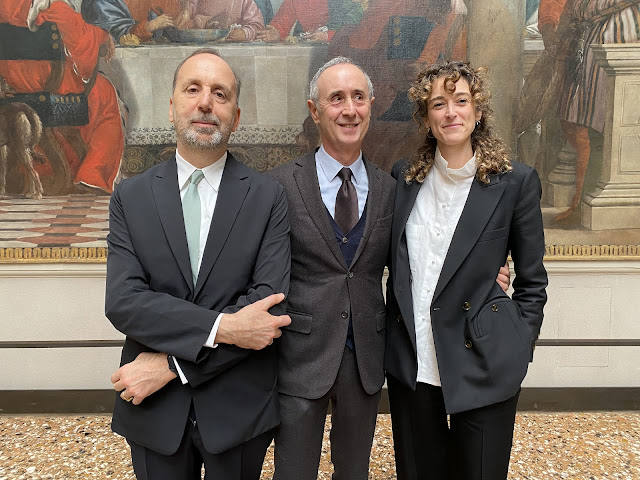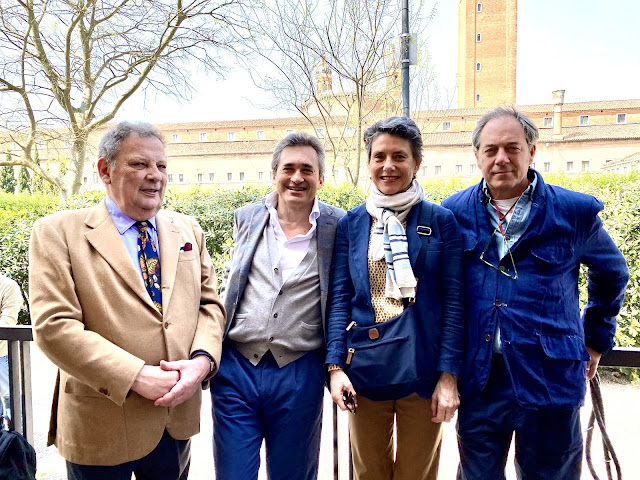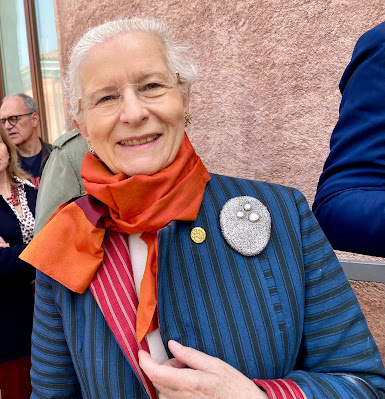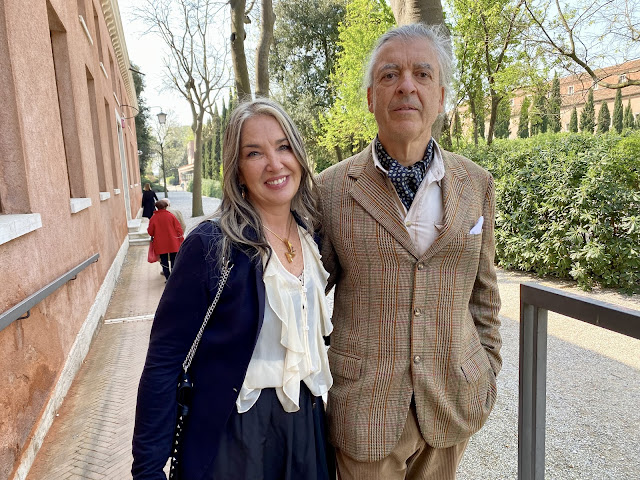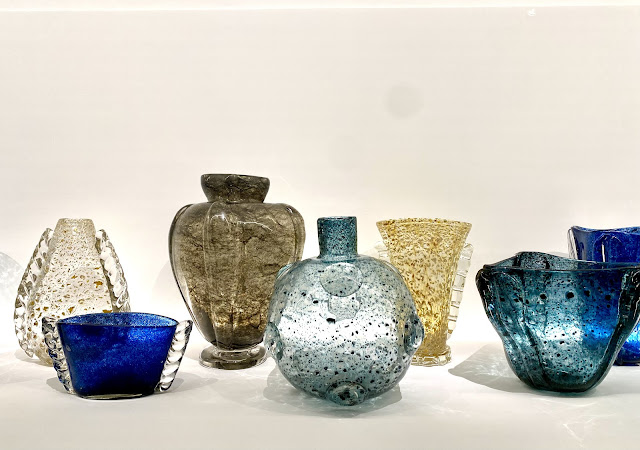Gallerie dell'Accademia di Venezia
Corpi Moderni
The Making of the Body in Renaissance Venice
At the Gallerie dell’Accademia di Venezia the major exhibition Corpi moderni. The Making of the Body in Renaissance Venice. Leonardo - Michelangelo - Dürer - Giorgione - Leonardo - Michelangelo - Dürer - Giorgione - until July 27 - is curated by Giulio Manieri Elia, Guido Beltramini, and Francesca Borgo. The exhibition offers a fascinating exploration of the conception of the human body that emerged in Renaissance Venice, spanning art, science, and material culture. Corpi Moderni delves into how, for the first time, the body was conceived as a field of scientific investigation, an object of desire, and a means of self-expression. The Renaissance marks a turning point where the body is no longer merely a biological entity but a cultural construct, shaped by science, art, and social conventions. On this occasion, Leonardo's famous Vitruvian Man - above - one of the iconic treasures of the Gallerie dell'Accademia and an international symbol of global cultural heritage, is on public display again after six years. For the first time, it is presented alongside an ancient Greek metrological relief, sparking a reflection on the concepts of - measure - and - ideal - rooted in antiquity.
Metrological Relief - 460-440 - BCE
Leonardo da Vinci - Vitruvian Man - Proportional Study of the Male Body 1490-1497
The exhibition brings together extraordinary works of art, some presented in Italy for the first time, including drawings, paintings, and sculptures from the most prestigious international and national museums and collections. Masterpieces by Leonardo da Vinci, Michelangelo, Albrecht Dürer, Titian, Giorgione, and Giovanni Bellini are featured alongside scientific instruments, anatomical models, books, garments, miniatures, and everyday objects.
Michelangelo Buonarroti - Studies for the Libyan Sibyl - 1510–11c.
Curators - Guido Beltramini, Giulio Manieri Elia and Francesca Borgo
The exhibition is divided into three major sections. The first - Il corpo svelato: conoscere - delves into the discovery of the human body as an object of scientific and medical study, with Padua and Venice serving as two key European centers of this exploration.
Leonardo da Vinci - The Great Lady
The Cardiovascular System and Organs of a Woman's Torso - 1509-1510
The second section - Il corpo nudo: desiderare - examines the representation of the body as an object of gaze and desire. On one side, the female nude, depicted in the iconic Renaissance invention of the reclining Venus, gracefully posed within a landscape—a motif that continues to influence art to this day. On the other, the lyrical, suffering, and sublime male body of saints and biblical heroes, portrayed in the style of classical antiquity.
Girolamo da Treviso - Sleeping Venus - 1515c.
The desire of the body ensuring lineage and future is depicted through domestic objects such as cassoni (wedding chests), childbirth trays, and exquisite portraits of young brides who, by subtly concealing one breast, evoke a controlled sense of eroticism —a common iconographic tradition in the Venetian region. In this context, Titian’s enigmatic painting The Lovers center stage. The man’s gesture of caressing his lover’s exposed breast has only recently been interpreted as a symbolic act affirming the marital bond.
Tiziano - Betrothed Couple with Witness - detail - 1510c.
The third and final section - Il corpo costruito: rappresentarsi - examines the body as a cultural space of representation. Clothing, surgical treatises, cosmetic tools, and personal care accessories reveal the Renaissance man and woman’s drive to conform to social standards and models, reflected in their portrayal through a specific inventory of symbols and adornments defining masculinity and femininity. The exhibition also investigates the concept of transcending the body itself, displaying armor and mechanical prosthetics used for the first time during the Renaissance to replace limbs lost in war and reinforcing the body’s role as a place of experimentation, metamorphosis, and transformation.
Pin It



